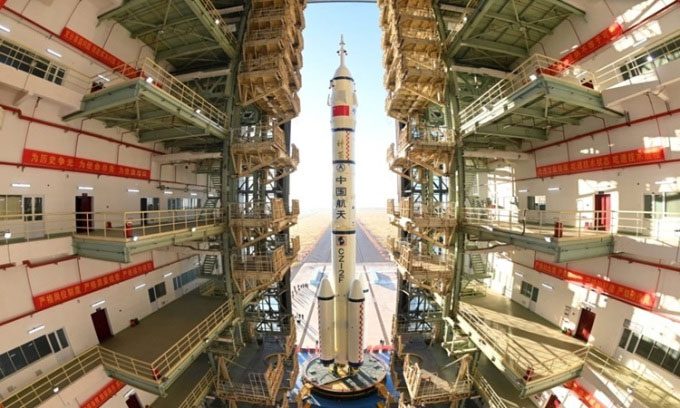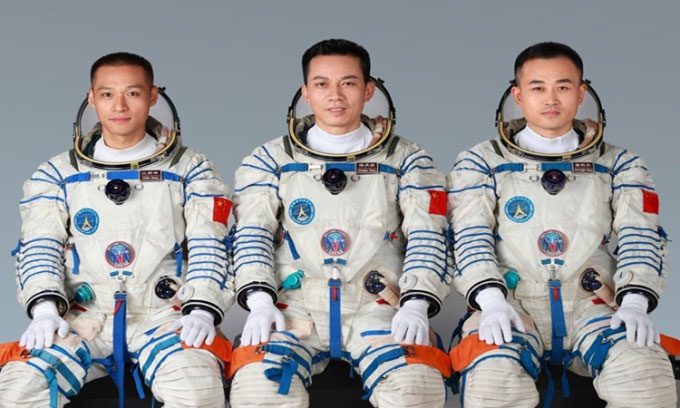Astronauts with an average age of 38 will spend 6 months living and working on China’s Tiangong space station.
Three former fighter pilots aged 33 to 48 for the Shenzhou 17 mission were introduced at a press conference on October 25. The Shenzhou 17 spacecraft is scheduled to launch at 11:14 AM local time on October 26 from the Jiuquan Satellite Launch Center in northwestern China. According to the schedule, the spacecraft will enter orbit about 7 hours later before automatically docking with the Tiangong station at an altitude of 380 km above the Earth’s surface. The three astronauts on board will be welcomed by the Shenzhou 16 crew, who have been living on the station for nearly 5 months.

The Shenzhou 17 spacecraft will launch on the Long March 2F rocket. (Photo: Xinhua).
The Shenzhou 17 crew will be the third group to live and work on the Tiangong space station this year. They are set to stay until April of next year, when the Shenzhou 18 crew arrives to take over the station. The mission commander is Tang Hongbo, 48, who was a member of the Shenzhou 12 mission in 2021, the first crew to live on the Tiangong station. Tang is not only the first astronaut to live on the space station twice but also holds the record for the shortest time between two missions for a Chinese astronaut. Born in Hunan province, Tang joined China’s second group of astronauts in 2010 after serving as a fighter pilot in the military.

Astronaut Tang Hongbo (center), Tang Shengjie (right), and Jiang Xinlin (left) will live on the Tiangong station until April next year. (Photo: Xinhua).
Jiang Xinlin and Tang Shengjie, also fighter pilots, are the other two members of the Shenzhou 17 mission. Tang Shengjie, 33, was selected in China’s third astronaut group in 2020. As the first astronaut from Gansu province in northwestern China, he is also the youngest member of the crew. Jiang, 35, also joined the space agency in 2020 and hails from Henan province in central China.
The most recent Shenzhou 16 mission marked the beginning of the “application and development” phase of China’s crewed space program, which includes experiments, health monitoring, science education, and regular scheduled maintenance of the station. The Shenzhou 17 crew will continue the previous astronaut team’s work with 70 experiments in fields such as space medicine, biotechnology, ecology, fluid physics, and materials science… They will also conduct spacewalks and various cargo missions.
Station maintenance will be a top priority. The station’s solar panel array has sustained minor damage from collisions with small debris. The repair process will enhance the station’s operations in the long term. The new crew will carry out maintenance tests to address the damage. The Shenzhou 16 crew is set to return to Earth on October 31. Before returning, they will attempt to capture the first high-resolution image of the space station in its full configuration.


















































